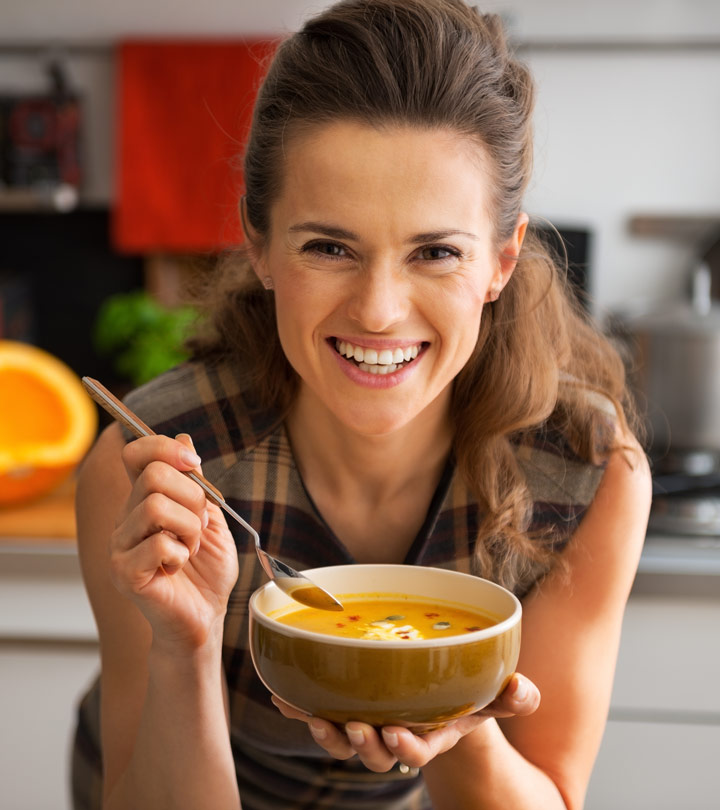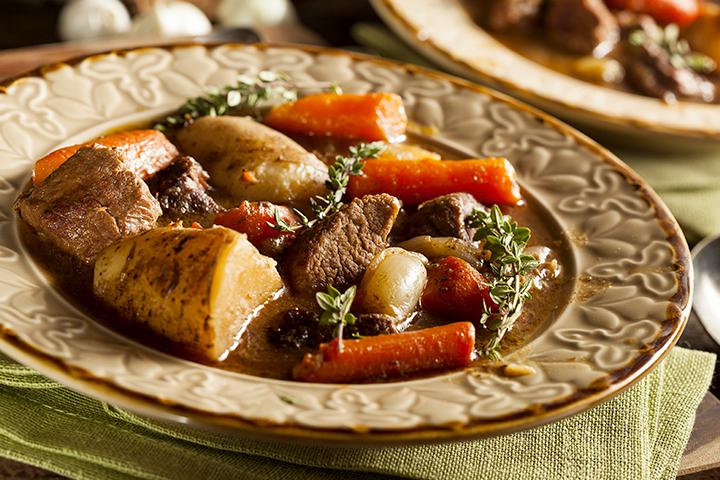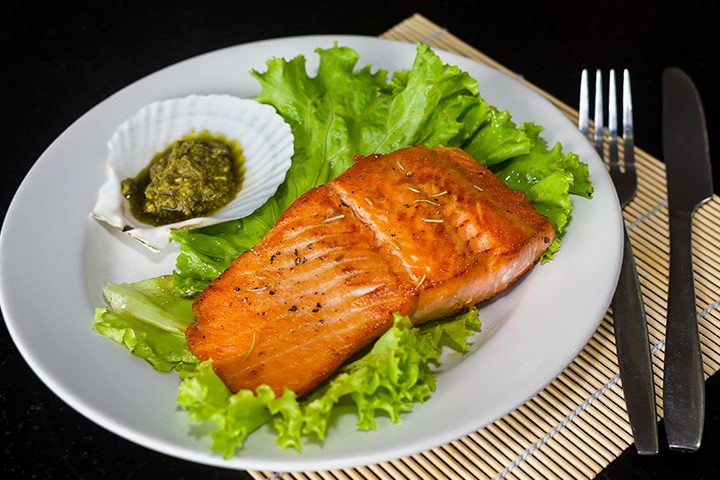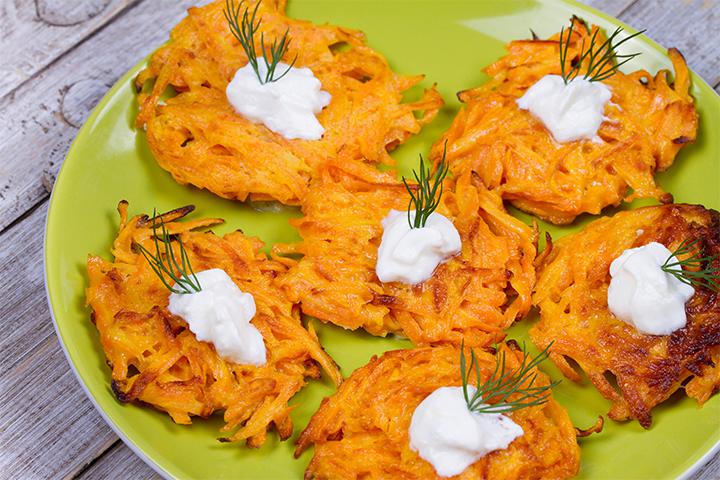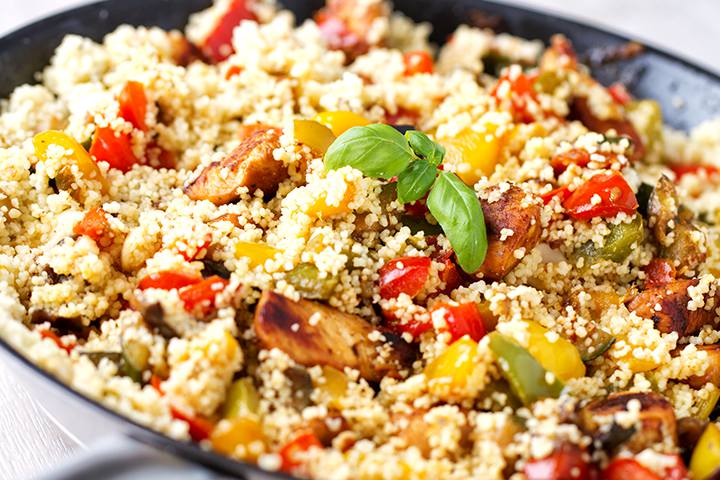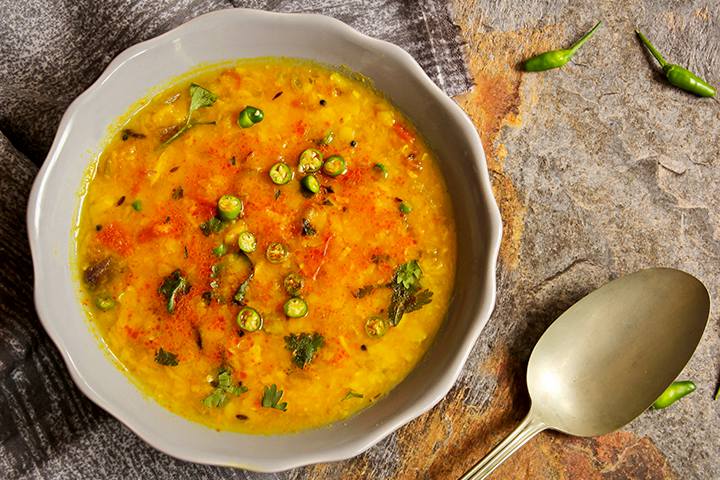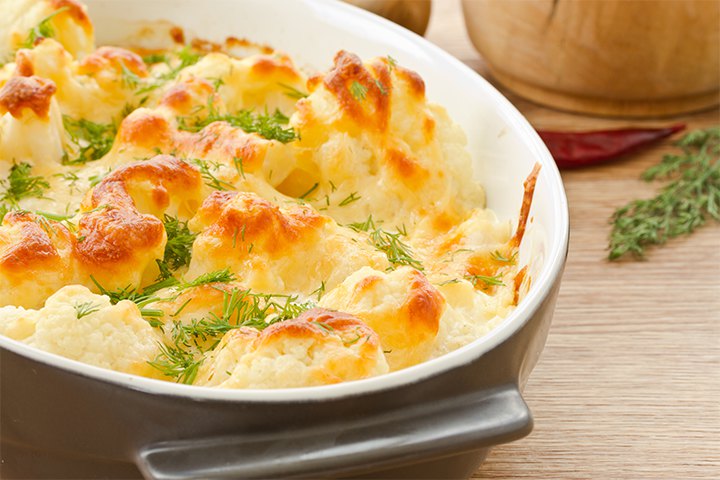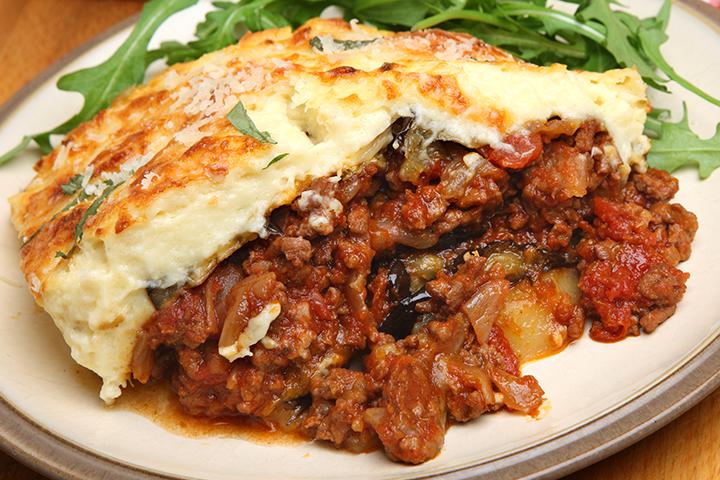Breastfeeding a newborn is not always an easy task, and you may often feel drained. Therefore, it is essential to be aware of the required intake of calories while breastfeeding your baby.
Reportedly, a nursing mother needs an additional 400–500 calories per day when breastfeeding to provide sufficient nourishment that enhances their infant’s growth and development.
Moreover, a mother’s milk is the only source of nutrition and is an immunity booster for the baby in the initial months. Since milk production requires a mother to consume extra calories, you must ensure this comes from ample quantities of healthy and nutrient-rich food.
Read on as we discuss the amounts and significance of the calorie-rich foods that should be consumed while breastfeeding.
Recommended Daily Calorie Intake While Breastfeeding
The total amount of calories needed while breastfeeding depends on your physiology, your level of physical activity, and how many times you breastfeed your baby. Talk to your doctor or a registered dietitian to determine how many calories you will need while you are nursing your infant.
Normally, most doctors advise intake of around 500 extra calories or more per day. It takes your total calorie intake to approx. 2000 to 2500 calories per day, and you can keep a check on your weight. However, don’t limit your food intake. You need to eat food, whenever you feel the urge. Consuming nutritious foods boosts your breastmilk production, and your infant gets enough milk. Focus on maintaining a balanced and nutritious postpartum diet containing fresh fruits, green vegetables, lean meat, proteins, whole grains, and healthy fats.
As your baby grows, the amount of milk they consume will change, and your energy requirements will also fluctuate (1).
Effects Of Reducing Calories While Breastfeeding
While you are breastfeeding, the uncontrolled intake of calories triggers unwanted weight gain. To avoid such a situation, you may need to reduce your calorie intake, and also remember to keep yourselves hydrated.
Here are few effects of reducing calorie intake while breastfeeding:
- As a nursing mother if you want to lose weight and reduce calorie consumption you can do that. However, your baby needs to be around two months old. A calorie intake of 1,800 calories per day should be more than enough for you and your baby. Reducing calories in the early stage of breastfeeding imposes harmful health effects and reduces breast milk production rate.
- Cutting calorie intake by more than about 25 percent interferes with the process of breast milk production. If you abruptly decrease the total amount of calories it can lead to numerous health difficulties. The best practice is to reduce the calories gradually over the lactation phase.
- Another danger of reducing calories when breastfeeding is that it makes you more susceptible to malnutrition. As your body does not get enough supply of nutrients and minerals, you may become malnourished and suffer from nutritional deficiencies.
- As a breastfeeding mother, if you want to lose weight during breastfeeding you can perform various physical exercises instead of cutting down your calories. A simple 15-20 minutes morning or evening walk burns 200 calories and keeps your weight normal (2).
Important Foods To Eat During Breastfeeding
You need to eat a healthy, nutritious and balanced diet while you are nursing your baby. The breast-milk production rate entirely depends upon your total calorie and nutrient intake.
Some of the beneficial foods that you can consume while you are breastfeeding, include:
- Fresh fruits and vegetables.
- Starchy foods including bread and rice.
- Whole grain foods like oatmeal and bread.
- Healthy proteins such as eggs, lean meats and a variety of pulses. You can also have two portions of fish per week, including the oily varieties Salmon.
- Low-fat dairy products including milk and yogurt.
- Water to keep your body dehydrated.
High-Calorie Whole Foods During Breastfeeding
You may want to reduce your calories and shed your extra pregnancy pounds. But, during lactation some of the calories burn out, and you start losing weight eventually. A low-calorie diet decreases your breast milk supply and deprives you of vital nutrients. During lactation, your body requires an extra supply of 500 calories each day. Hence, it is important to obtain these extra calories for breastfeeding from your food supply.
Some of the calorie-rich foods to enhance breast milk supply include:
1. Meat and its alternatives
These foods contain beneficial Vitamins such as B6 and B12, which enhance breast milk secretion. During lactation, your body needs to acquire the protein and iron from meat and its alternatives such as chicken, pork, beef and red meat. The recommended intake of meat during lactation is around 6 ounces per day.
2. Seafood
During the lactation phase, aim to consume 8 to 12 ounces of seafood including shellfish or salmon per week. Seafood contains omega-3-fatty acids (DHA), Vitamin B6, and Vitamin B12. All these beneficial nutrients improve your baby’s development ability. Avoid the intake of high-mercury fish such as swordfish, shark, and king mackerel. Mercury hampers your baby’s brain development process and triggers the condition of mental retardation.
3. Dairy products
Calcium content comes from milk and dairy-based products. Your body requires an adequate amount of calcium to enhance milk supply. Getting three servings of milk or dairy based products daily helps to maintain the milk production rate. Dairy products such as cheese and yogurt contain protein, vitamins, and minerals.
4. Fruits and vegetables
Breastfeeding increases your body’s need for vitamin C, vitamin A, and folate. Consuming dark green vegetables, including spinach, broccoli, cabbage, sprouts, and fortified cereals, can help ensure optimum folate intake. On the other hand, citrus fruits, tomatoes, berries, and yellow vegetables, including carrots, can help meet vitamin C and vitamin A intake (3).
Nutritional Requirements During Breastfeeding
You need to pay utmost emphasis on your nutritional intake and include all the vital nutrients in your breastfeeding diet. During the phase of lactation, your body requires an extra amount of calories to enhance the breast milk supply. It is important to get the requisite amount of calories from beneficial and nutritious food. You may lose around 1 to 4 pounds per month, as breastfeeding burns your calorie intake.
Let us look at all the essential nutrients that you need to consume while breastfeeding:
1. Protein
While breastfeeding, you need to consume two to three servings of protein per day. You can include fish, lean meat and poultry in your diet. Some of the recommended protein foods you can consume to maintain your protein intake include:
- Eggs
- Cheese
- Low-fat yogurt
- Lean meat
- Tofu
- Seafood
- Meat
- Poultry
- Cottage cheese
- Dried beans
2. Calcium
The recommended daily intake of calcium during lactation is around 1,300 milligrams per day. Eating calcium-rich foods help in the healthy bone development of your feeding infant. Some of the beneficial calcium-rich foods you can add to your daily diet to increase your calcium intake include:
- Milk
- Calcium-fortified tofu
- Yogurt
- Hard cheeses
3. Iron
Iron intake enhances blood production rate and helps your body fight harmful infections. Therefore, iron is considered one of the most vital minerals required during lactation. While breastfeeding the recommended daily intake of Iron is 9-10 milligrams per day. Some of the best sources of iron are:
- Egg yolks
- Dried fruits
- Meat
- Seafood
- Poultry
- Dried beans
4. Vitamin C
Vitamin C helps improve the overall functionality of your body process and boosts the milk production rate during lactation. The recommended daily intake of Vitamin C during breastfeeding lies around 120 milligrams per day. Some of the best sources of Vitamin C are:
- Citrus fruits
- Cabbage
- Tomato
- Potato
- Bell Pepper
- Broccoli
- Kiwi
- Cauliflower
Important Nutrition Tips For The Lactating Mothers
Consume plenty of soups, fruit juices, and two to three liters of water daily as a part of a healthy eating routine. An adequate amount of fluid enhances your breast milk production and compensates for the loss of fluid from your body.
- Consume nutritious fruits and vegetables that contain essential vitamins, minerals, and fibers. Adequate fiber intake is crucial for maintaining healthy digestion while nursing.
- Add different high-quality protein foods to your diet including lean meat, fishes, and eggs.
- Avoid the intake of fried and sweetened foods, as they do not supply any vital nutrients and neither increase milk secretion.
- Consume three to four servings of milk and dairy products per day to acquire a substantial amount of calcium, protein and phosphorous.
- Eat calorie-rich foods such as nuts (almonds, walnuts) to compensate for the increased caloric needs during lactation.
- Avoid allergic foods such as eggplant, legumes or spicy foods as they trigger harmful health discomforts in your baby.
- Avoid smoking and intake of alcohol completely. Both the factors degrade the breast milk production rate.
- Perform light physical exercises such as yoga, walking and jogging to burn your calories and maintain a nominal body weight (4).
Drinking Water During Breastfeeding
Drinking an adequate quantity of water keeps your body hydrated and satisfies your thirst quench. Intake of water does not affect your breast milk supply. However, during the phase of lactation your body releases a specific hormone, Oxytocin, which makes you feel thirsty. So drinking water keeps you satisfied (5).
If you want to check whether you’re getting enough water to drink during breastfeeding, check the color of your urine. If it’s transparent and pale color, you are getting plenty of water. But if it’s yellow or smells strong you are dehydrated, and you have to drink the plentiful amount of water
Drinking Tea Or Coffee During Breastfeeding
Avoid the intake of caffeinated drinks such as tea or coffee during breastfeeding. Consuming more than 200mg of caffeine per day reduces your breast milk production rate. Moreover, higher amounts of caffeine harm your newborn baby, and she experiences symptoms of restlessness, constant crying, and difficulty sleeping.
Healthy Recipes To Increase Caloric Intake While Breastfeeding
Here are some healthy food recipes you can include in your postpartum diet to meet your calorie needs:
1. Beef stew
You will need
- 1 kg chopped steak
- 1 tbsp. extra virgin olive oil
- 1 onion, roughly chopped
- 4 medium carrots thinly sliced
- 1 bay leaf
- 300g turnips, roughly chopped
- 2½ cups hot beef stock
- Salt and pepper to taste
How to
- Preheat the oven to the temperature of around 150 degrees Celsius.
- Heat the olive oil in microwave proof casserole dish and add the chopped steak. Fry the meat and stir constantly, until they turn golden brown. Remove the dish from the flame and keep aside.
- Add the chopped onions to frying pan containing oil. Sprinkle some amount of water. Add salt and freshly grounded black pepper for seasoning the meat. Fry the contents for the next 3-4 minutes, until the water evaporates. Lastly, add the crushed garlic and fry for one minute.
- Add the fried beef to the pan. Now add all the sliced vegetables in the pan including carrots, turnips, and bay.
- Pour the hot beef stock in the pan and bring the flame to simmer. Cover the microwave dish using a foil and place the dish in the oven for three hours.
- Your hot beef stew is ready to serve.
2. Vegetable And Barley Soup:
You will need
- 1 tbsp. sunflower oil
- 1 clove crushed garlic
- 1 onion chopped
- 3 medium carrots sliced
- 3 sticks celery chopped
- 1 medium parsnip, chopped
- 100g pearl barley
- 1 ¼ liters hot vegetable stock
- 100 g shredded cabbage
- Crusty bread, to serve
- Salt and pepper to taste
How to
- Pour the sunflower oil into the large frying pan and add onion, garlic, carrots, parsnip, and celery. Fry the vegetables and stir constantly. Add salt and freshly grounded paper for seasoning the fried vegetables.
- Cover the frying pan with a cover or the pan lid and allow the vegetables to get soften. After 15 minutes open the lid and stir the vegetables with soft hands.
- Add the pearl barley to the frying pan and mix well. Pour the vegetable stock into the pan and bring the mixture to boil. Reduce the flame and let the mixture be on the flame for next half an hour.
- Add the shredded cabbage to the soup and cover the lid for 1-2 minutes. Check the seasoning and add salt if needed.
- Serve the hot vegetable and barley soup with crusty bread.
3. Salmon With Pesto:
You will need
- 4 salmon steaks( 175gms each)
- Mixed salad for serving
For Parsley Pesto:
- 40g fresh flat-leaf parsley
- 25g pine nuts
- 25g freshly grated Parmesan cheese
- 1 tbsp. extra virgin olive oil
- 2 garlic cloves, roughly chopped
- Salt to taste
How to
- To prepare the parsley pesto, add a garlic clove, pine nuts, parsley leaves and salt into a food blender. Blend the content to obtain a fine puree.
- Add Parmesan cheese to the blender and blend again. Add few drops of olive oil to add extra fragrance to the pesto sauce. If the consistency of the sauce looks too thick, add some extra virgin olive oil and blend to obtain a smooth paste. Scrape the puree in a separate bowl.
- Preheat the grill to medium heat. Place the salmon fillets on the grill and cook for about 10-15 minutes. Grill the fish fillets until the flesh turns flaky and pinkish in color.
- Serve the grill salmon fillets with parsley pesto and salad.
4. Carrot Fritters
You will need
- 2½ tbsp. sunflower oil
- 200g carrots
- 2 garlic cloves, crushed
- 1 small onion, finely chopped
- 150g potatoes
- 2 eggs, beaten
- Salt and pepper to taste
How to
- Heat sunflower oil in a large fry pan and sauté chopped onion until they turn transparent. Add the crushed garlic and cook the content for another two minutes. Put the fried onions in a bowl.
- Coarsely grate the carrots and potatoes using a grater. After you finish grating each of the vegetables, put then a soft napkin. Gently press the grated vegetables to squeeze out the extra moisture content.
- Add the grated vegetables to the onion moisture. Now add the beaten eggs and salt to taste.
- Take a lump of the carrot mixture and give them shapes of small fritters or pancakes. Cook over medium flame in a fry pan. Fry the fritters until both the sides gets crusty.
- Serve the hot crusty carrot fritter with yogurt.
5. Warm Chicken Bulgar Wheat Salad:
You will need
- 6 tbsp. olive oil
- 4 boneless chicken pieces, about 200g each
- 150g bulgar wheat
- 1 large onion sliced
- 1 red pepper sliced
- 1 large courgette sliced
- 1 garlic clove, thinly sliced
- 4 tbsp. chopped parsley
- ½ small aubergine, cut into small pieces
- Salt and pepper to taste
How to
- Heat olive oil in a large fry pan. Add the different sliced vegetables including onion, red pepper, garlic and courgette to the pan and cook on high flame for about 15-20 minutes. Stir the content constantly until they get softened and turn golden brown.
- Add the bulgar wheat in a separate saucepan containing water. Boil the water for 15 minutes and add a pinch of salt. Let the bulgar wheat get tender in the boiling water.
- Brush olive oil on the boneless chicken pieces and season them with salt and pepper. Heat a large griddle pan over medium heat. Place the chicken in the pans and cook each side of the chicken for 5-6 minutes. Until the chicken pieces turns golden cook them in the pan.
- Drain the bulgar wheat from the water and put them in a large bowl. Add the hot vegetables, seasoned chicken and toss the contents well.
- Your warm chicken bulgar wheat salad is ready to serve.
6. Tarka Dal:
You will need
- 250g red lentils
- 200g chopped tomatoes
- 1 onion, finely chopped
- Fresh ginger finely chopped
- ½ tsp. cumin seeds
- ½ tsp. turmeric
- 2 cup vegetable stock
- 150g low-fat yogurt
- salt and pepper to taste
- Coriander leaves, to garnish
For Tarka:
- 1 tbsp. sunflower oil
- ½ tsp. cumin seeds
- 2 tsp. black mustard seeds
- 2 garlic cloves, chopped
- A pinch of turmeric
How to
- Rinse the red lentils with water and drain the excess water. Pour the vegetable stock into a pressure cooker and add rinsed lentils, onion, tomatoes, spices and ginger.
- Stir the content and add salt and pepper to taste. Cover the lid of the pressure cooker tightly and let the whistle blow for 3-4 times. As the lentils turn soft and tender transfer them in a bowl.
- When the lentil is ready to serve, prepare the tarka in a separate small frying pan. Heat oil and add all the tarka ingredients (mustard seeds, cumin, garlic) one after the other.
- Mash the lentil mixture using spoons and sprinkle the hot tarka on the top.
- Sprinkle coriander leaves on the top of the tarka dal and serve hot.
7. Cauliflower Cheese:
You will need
- 1 medium size cauliflower, sliced into small flowers
- 2 tsp maple syrup
- 50g Gruyère cheese, grated
- 1 tbsp olive oil
- 2 tsp maple syrup
- 350g crème cheese
- 2 tsp mustard sauce
- 1 tbsp grated vegetables
- 100 g Parmesan cheese
- 1 tbsp chopped Fresh chives
- Salt and freshly ground black pepper
How to
- Preheat the microwave oven at a temperature of 170 degree Celsius.
- Cut the cauliflower into even sized florets and toss them with maple syrup and olive oil. Sprinkle salt and pepper to taste.
- Transfer the content into a roasting tray and cook the florets in the microwave for about 15-20 minutes. Roast the cauliflower on all sides so that they become tender and soft.
- Put the cream cheese, grated Gruyere cheese and mustard sauce into a separate bowl and mix well. Put the roasted cauliflower florets into the sauce mixture and coat them properly.
- Place the coated cauliflower pieces on the baking tray and sprinkle parmesan cheese on the top. But the tray back in the oven for about next 10 minutes. Sprinkle fresh chives on the top.
- Your hot cauliflower cheese is ready to serve.
8. Greek Lamb Moussaka:
You will need
- 400g potatoes, grated
- 350g lean lamb mince
- 1 medium onion finely chopped
- 150 ml vegetable or meat stock
- 175g chestnut mushrooms
- 2 garlic cloves
- 400g chopped tomatoes
- 1 tbsp. chopped fresh rosemary
- 1 medium egg
- 1 tbsp. chopped fresh asparagus
- 1 tbsp. Worcester sauce
- 100g low – fat soft cheese
- 150g Greek yogurt
- Salt and pepper to taste
How to
- Preheat the oven at a temperature of 190 degrees Celsius.
- Boil the grated potatoes in a saucepan for about 10 minutes. Drain the excess water and keep it aside.
- Take a large saucepan, add oil and fry the chopped onion, minced meat and garlic for about 5-6 minutes. Let the meat turn pinkish and the lean meat release the oil.
- Now add the tomatoes. Sliced mushrooms, stock, herbs and Worcestershire sauce. Bring the content to boil and then reduce the heat.
- Place the mince lamb mixture into the baking tray and cover it with sliced potatoes.
- Beat the eggs, yogurt, and soft cheese and spread the mixture over the potato layer.
- Bake the contents for about 45 minutes and serve with freshly chopped rosemary and asparagus.
A woman requires additional calories to meet the requirements for the growth and development of the baby during the breastfeeding phase. Finding the right balance of calories in your daily diet could be challenging. Hence, you may try the above tips to increase the number of calories while breastfeeding. While increasing your calorie intake, focus on consuming a balanced diet and using natural ingredients as much as possible. If you find it overwhelming to proportionate your meals or are facing trouble planning them, seek the help of a dietitian.
Key Pointers
- A nursing mother needs an additional 400-500 calories per day during breastfeeding to provide adequate nutrition for their infant’s growth and development.
- Fresh fruits, green vegetables, lean meat, proteins, whole grains, and healthy fats contribute to a nutrient-rich diet that can help a nursing mother produce more breastmilk for their baby.
- Early calorie restriction during breastfeeding can have detrimental effects on health, slow breast milk production, and increase vulnerability to malnutrition.
- Meat, dairy products, seafood, fruits and vegetables, starchy foods, and whole grains are high-calorie items that can increase breast milk production.
Breastfeeding offers an excellent means of nourishing your baby. Here are some valuable tips for mothers to enhance their success in this endeavor!
